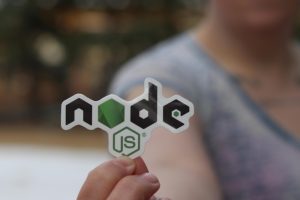Peer Review Platforms: Students Grading AI-Generated Essays
In recent years, the use of artificial intelligence (AI) in education has become increasingly prevalent. From chatbots to automated grading systems, AI is transforming the way students learn and how teachers instruct. One particularly fascinating application of AI in education is the use of peer review platforms for grading AI-generated essays. These platforms allow students to receive feedback on their writing from their peers, rather than solely relying on a teacher to grade their work. In this article, we will delve deeper into the world of peer review platforms and how they are changing the traditional methods of essay grading.
The Rise of AI in Education
The use of AI in education has been on the rise in recent years, and it is predicted to continue growing in the future. The main reason for this growth is the potential for AI to improve the learning experience for students. With the help of AI, teachers can now have access to a vast amount of student data, which can be used to personalize their teaching methods for each student. AI is also streamlining administrative tasks, freeing up teachers’ time to focus on more critical tasks, such as providing individualized feedback to students.
The Traditional Peer Review Method
In traditional peer review, a student would submit their essay to their peers, who would then provide feedback on the writing, such as suggestions for improvement or areas of strength. However, this process can be time-consuming, as it requires students to physically exchange papers and provide written feedback. It also relies on the students’ ability to provide accurate and helpful feedback.
The Introduction of AI in Peer Review Grading
With the growing popularity of AI in education, there has been a rising interest in integrating AI into the peer review process. In this method, students submit their essays to a peer review platform, which uses AI algorithms to analyze and evaluate the writing. The AI-generated feedback is then shared with the student and their peers for further discussion and improvement.
The Benefits of Using Peer Review Platforms
There are several benefits to using peer review platforms for grading AI-generated essays. First and foremost, it provides a unique opportunity for students to receive feedback from multiple sources, rather than just their teacher. This can help students develop a more well-rounded understanding of their writing and identify areas where they need to improve. Additionally, using AI in the peer review process eliminates any bias that may be present in traditional methods of grading, ensuring a fair and objective evaluation of the writing.
Improved Writing Skills
Another significant advantage of using peer review platforms is that it encourages students to become more critical and reflective of their own writing. By receiving feedback from their peers and AI, students can gain a better understanding of their writing strengths and weaknesses, allowing them to improve their skills over time. It also promotes collaboration and communication skills, as students work together to provide feedback and discuss their writing.
The Future of AI in Peer Review Grading
The use of AI in peer review grading is still a relatively new concept, and there is much potential for its growth and development. As AI technology continues to advance, we can expect more sophisticated and accurate feedback from these platforms. Furthermore, with the rise of virtual learning, the use of AI in peer review will likely become even more prevalent, as it offers an efficient and convenient way for students to receive feedback on their writing.
In Conclusion
Peer review platforms for grading AI-generated essays are revolutionizing the traditional methods of evaluating student writing. These platforms offer a unique and valuable learning experience for students, promoting collaboration, critical thinking, and self-reflection. As AI technology continues to advance, we can expect to see further developments in this field, ultimately enhancing the overall learning experience for students.











